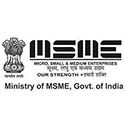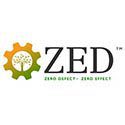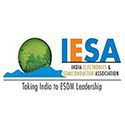Printed circuit boards or PCBs are manufactured according to the designer specifications. However, some few errors such as the components on the circuit board can be soldered in backward or in the wrong position, Due to this the components can go bad during the fabrication process, or accidents happen along the way that render them faulty. All of these make a circuit work poorly or not at alI. In either of these cases, it is necessary to repair a malfunctioning circuit board. Luckily, a few tricks and techniques can greatly speed up to find out the troublesome “feature.”
PCB Troubleshooting
Printed circuit boards (PCBs) are a mass of insulators and copper traces that connect clusters of components such as resistors, capacitors, transistors, diodes and fuses together to create a modern circuit. Troubleshooting them is often quite a big challenge, with factors such as size, number of layers, signal analysis, and types of components used in the circuit board plays a large role. Some of the complicated boards require specialized equipments for properly troubleshooting the PCBs, but most troubleshooting can be done with the basic electronic equipment to follow traces, currents, and signals through the circuit.
Having the Right Tools
The Most basic PCB troubleshooting can be done with just a few tools. One of the most dynamic tool used by everyone for troubleshooting PCBs is the multimeter, but depending on the complexity of the PCB and the problem in the circuit board, we may need to use other advanced equipments such as an LCR meter, oscilloscope, power supply, and logic analyzer may also be needed to dig deep into the operational behavior of the circuit.
Doing a Visual Inspection
Conduct a visual inspection of the board to identify the potential issues such as overlapped traces, burnt components, cracks, and dry joints. This is one of the easiest ways to troubleshoot without giving any power to the circuit board.
A good magnifying glass is also a crucial tool for the visual inspection as there may be some little physical damages that cannot be seen easily with a human naked eye.
Doing a Physical Inspection
If the visual inspection does not lead to finding out the significant issue in the circuit board, then it’s time to go beyond a step by applying power to the board. You need to ensure that the integrated circuit (IC) receives the appropriate levels of the power supply.
Inappropriate levels of power supply to the IC can cause overheating or overloading on the board. You can easily trace where high voltages might have caused damage to the PCB or components by merely touching the surfaces without the use of an expensive thermographic camera.
By touching various parts of the circuit, you can also alter the impedance of the circuit. So since this alters the system’s behaviors, it can help you trace out the parts that need additional capacitance.
Explicit Component Testing
This is the stage of troubleshooting where you’ll need to start using the test tools. First, you need to measure the power supply voltages in the entire circuit board.
Afterwards, measure the voltages at various parts of the circuit to identify any part with inappropriate voltages. The PCB schematics will come in handy at this stage.
ICs Testing
The final and the most challenging components to check are the ICs. Most of them can be easily identified by their markings and many can be operationally tested using oscilloscopes and logic analyzers, but the number of specialty ICs in various configurations and PCB designs can make testing them very challenging. Comparing the behavior of a circuit to a known good circuit is often a useful technique and should help anomalous behavior to stand out.









